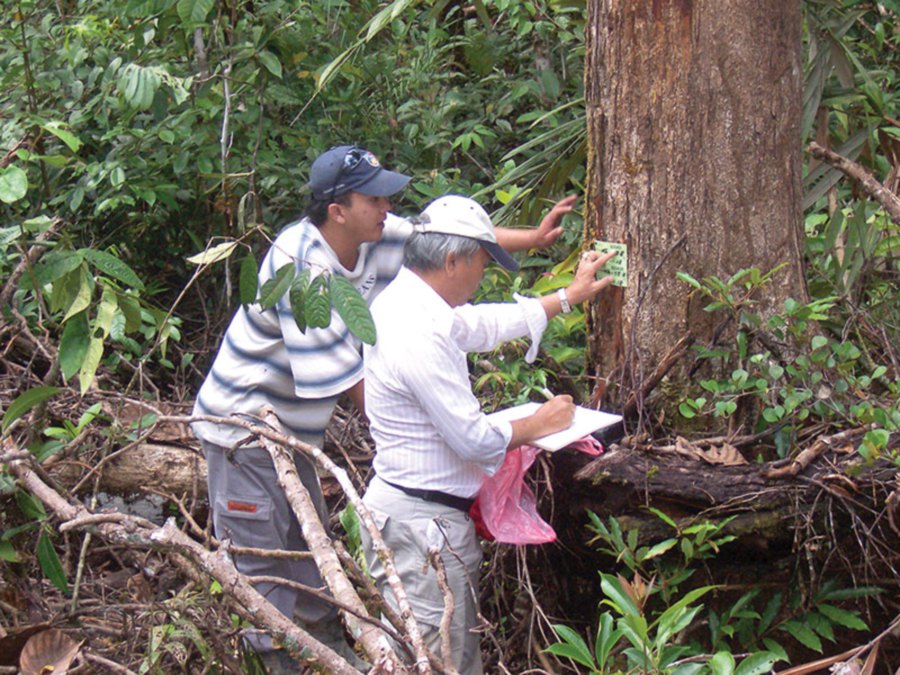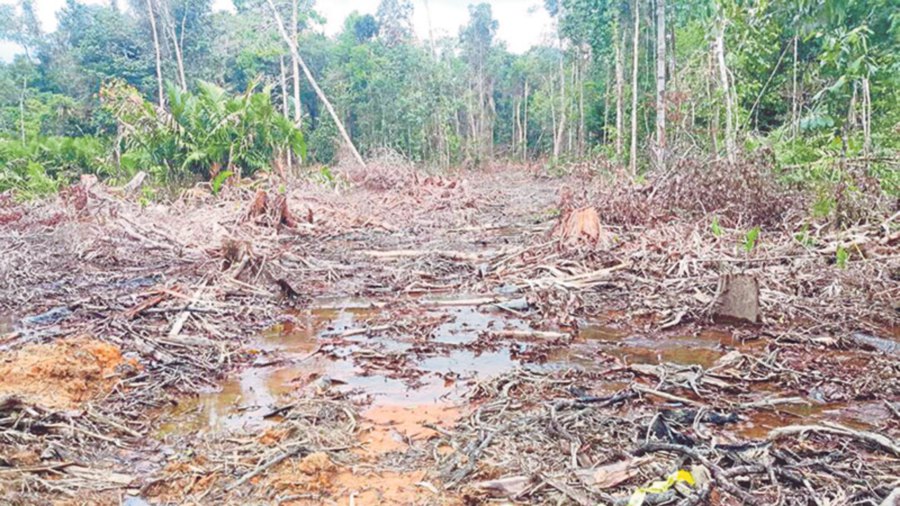For most parts, the changing weather is easy to ignore; we live in towering concrete blocks and retreat to places with air-conditioning on a daily basis. But hundreds of kilometres away from us is truly where the trouble is brewing. Deep in the heart of our jungles, the roar of armies of chainsaws is eliciting the silent cry of our diminishing rainforests.
The impact of deforestation on our changing weather is undeniable. Trees don’t just release oxygen into the air — their leaves act in a sponge-like way, absorbing carbon monoxide, greenhouse gases and sulfur dioxide. Trees also play a pivotal role in keeping the planet cool, ushering in much-needed rain. With the soil, it plays mother — using its roots to keep it in place.
We’re aware that forests around the world are fast depleting — a state attributed to illegal logging to make way for the more profitable oil palm, timber trade, housing developments and dams. Realistically, there’s no way of putting a stop to the economic sense of oil palm or the timber trade which has been around for eons. There isn’t a plausible reason to protest the clearing of land to build residential areas to cater to the world’s increasing population either.
But there is one alternative that can help Mother Nature find at least a semblance of her balance again — making forestry sustainable. Leading the way to this future here in this country is the Malaysian Timber Certification Council (MTCC), a small, non-profit, independent organisation with a huge task.
 There is an auditor for each aspect of SFM — ecological, socio-cultural and economical.Before companies are given the MICS certification, they will be audited by third parties who see to each aspect.
There is an auditor for each aspect of SFM — ecological, socio-cultural and economical.Before companies are given the MICS certification, they will be audited by third parties who see to each aspect.
Solid as wood
“We’re all born with a natural affinity for the forest,” begins Yong Teng Koon, the CEO of MTCC, leading me to the boardroom of its office in Jalan Yap Kwan Seng. “We love the sight of greenery. When we see a patch that is botak, it’s quite normal to hear people ask, ‘Why are they cutting down the trees?’”
Yong spearheads the organisation with all of 15 people in it, a team so small “... you can see the whole team in close-up group shots,” he quips.
This is where the MTCC has been based since it first started operations in 1998. Over the last 19 years, the MTCC has worked with several governmental agencies, NGOs and various stakeholders to develop and operate the Malaysian Timber Certification Scheme (MTCS) — a voluntary scheme which ensures that Malaysian timber products which are manufactured or exported are sourced from sustainably managed forests.
The first tropical timber certification scheme in Asia Pacific to be endorsed by the Programme for the Endorsement of Forest Certification (PEFC), the MTCS certifies forest owners and managers who follow or meet the guidelines and requirements of managing the forests in a sustainable manner.
“Many people these days are concerned about traceability. Companies and consumers don’t want to be linked with illegal activities in countries where products may be sourced in a controversial way,” explains Yong, before pointing out that certified timber can be tracked at every stage, from the logging in the forest to the supply chains and right up to the point of export.
Much like the food we put on our plates, consumers are becoming more conscious of where their timber comes from, especially in the European markets.
“There are forest managers who feel that there’s no need for certifications because they don’t need to sell their timber to the eco-conscious European market. But the thing is, the EU markets are the ones who can give us better prices for the value of our timber,” adds Yong, citing the 2013 EU Timber Regulation legislation, which is similar to that of Australia and the US, that demands for only certified timber in their markets.
Sustainable Forest Management, shares Yong, has become an important requirement in markets which operate in developed countries. The process of planting seedlings to when the trees are ready to be felled at their peak takes 30 years.
Sustainability, he adds, isn’t just viewed from an ecological perspective. “Apart from how the logging will affect the soil and water resources, any company that’s certified by MTCS has to first qualify for the certification standards which include socio-cultural and economic elements,” he divulges, citing examples of how forest managers and auditors have to conduct dialogues with members of indigenous communities who inhabit the land.
 Illegal logging destroys more than the ecology of the jungle. It also affects the lives of animals that inhabit the area, and of indigenous people who rely on the forests.
Illegal logging destroys more than the ecology of the jungle. It also affects the lives of animals that inhabit the area, and of indigenous people who rely on the forests.
Seeing wood for the trees
In spite of its minimal environmental impact and wider access to bigger, better export markets (MTCS certified timber has already been exported to 61 countries worldwide), the MTCS scheme is not compulsory.
“Most of the timber comes from tropical countries that are developing nations. Many of them don’t have the means and infrastructure to even set up accreditation bodies. These countries have so many other issues to look into before they can even look at trying to get themselves certified,” says Yong ruefully.
The process of getting certified can incur additional operating costs as forest managers have to go through processes of accreditation and auditing. “We understand that as it is, people have a lot to pay for, and for those who serve markets that don’t insist on sustainable timber, they don’t see the point in getting certified.”
But Yong is quick to explain why MTCC wanted the MTCS to be a voluntary scheme. He continues: “Getting timber certified is a long term commitment. We’re not going to force people to take up the scheme, rather, they must first understand the long-term positive outcome and want to get their products certified.”
Yong presents the many challenges in getting forest managers to take up the scheme. The most challenging one? Changing the mindset of the people and managing the different perceptions of how the forest should be managed.
“We have to see the bigger picture,” he warns, citing how old loggers abhor the idea of so much paperwork. In the early days, trees were abundant and logging was a money-minting business.
“Malaysia is a major exporter of tropical timber and timber products around the world. But the environmental movements of the 1980s and ‘90s impacted the Malaysian timber industry,” says Yong, referring to the calls for banning timber imports during the period when the world was losing most of its trees. From 1990-2000 alone, 16 million hectares of forests were lost yearly.
The call for a ban, he recalls, was counter-productive.
“It was after the Earth Summit in 1992 that Malaysia decided to embark on a certification scheme of our own because we realised that the way forward was sustainability and not so much stopping the timber trade which we still rely on today.”
If anything, timber will become a material our generation would most likely look to considering the onset of climate change and global warming.
As the CEO of the Malaysian Timber Council, Datuk Dr Abdul Rahman Nik explained at the recent International Architecture, Interior Design and Building Exhibition at the KL Convention Centre, climate change has altered the demands for building materials like timber which is low in energy consumption and reduces carbon footprint.
Years on, Yong admits that the journey of getting certified is a long and difficult one. He points to a diagram next to him: “You see, even though it’s been 26 years since that decision, only 12 per cent of the world’s forest have been certified,” he says, shaking his head. “It’s been a very slow, uphill journey, but it’s a journey that all of us have to take together.”
In 100 years, we stand to lose all our forests. Yong and his team can only hope that as consumers, we can all take that first step in asking for sustainable, certified timber. Maybe then, we won’t have to wait too long before we start feeling a little relief from the heat.
Source: New Straits Times | 6 August 2017














